
Explore new ways to celebrate 2022 Family Literacy Day.
- Subject:
- Early Childhood Development
- English Language Arts
- Material Type:
- Primary Source
- Author:
- Jessica Wall
- Date Added:
- 01/10/2022

Explore new ways to celebrate 2022 Family Literacy Day.
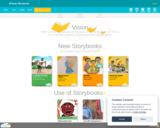
The African Storybook (ASb) is a literacy initiative that provides openly licensed picture storybooks for early reading in the languages of Africa. Developed and hosted by Saide, the ASb has an interactive website that enables users to read, create, download, translate, and adapt stories. The initiative addresses the dire shortage of children’s storybooks in African languages, crucial for children’s literacy development.

Although this free resource was developed with the state of Alaska in mind, it includes a tremendous amount of great information and strategies that apply to the teaching of reading universally. A definite must-have for your toolkit!
This playbook combines decades of nationwide research with examples and resources developed by educators in the state of Alaska. You’ll find an introduction to phonological awareness, phonics, vocabulary, fluency, and comprehension. You will also find links to valuable resources where you can continue to deepen your knowledge.
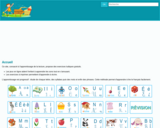
« Ce site, consacré à l'apprentissage de la lecture, propose des exercices ludiques gratuits.
Les jeux en ligne aident l'enfant à apprendre les sons tout en s'amusant.
Les exercices à imprimer permettent d'apprendre à écrire.
L'apprentissage est progressif : étude de chaque lettre, des syllabes puis des mots et enfin des phrases. Cette méthode permet d'apprendre à lire le français facilement. »

Students will compare and contrast hunting and gathering to farming, and will be able to explain this revolution.

This video shows Sarah Mitchell (Instructional Coach), Katie Benton (2nd Grade Teacher) and Brenna Schneider (Kindergarten Teacher), thinking about their work implementing the K-2 Skills Block at Lead Academy. The coach and teachers describe the importance of the Skills Block, and how to use the phases and micro-phases to most strategically group students and plan differentiated activities. The video addresses common questions and challenges teachers face when implementing this component of the EL Education Language Arts curriculum at grades K-2, in particular how to make most strategic use of the differentiated small group time.

Students are introduced to the circulatory system, the heart, and blood flow in the human body. Through guided pre-reading, during-reading and post-reading activities, students learn about the circulatory system's parts, functions and disorders, as well as engineering medical solutions. By cultivating literacy practices as presented in this lesson, students can improve their scientific and technological literacy.
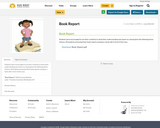
Students were encouraged to use their creativity to show their understanding and report on a book given the following three choices. All students presented their book reports and gave a book talk in front of the class.

This is a video recording of the lunch and learn session from October 21st, 2021 on how the brain learns to read. Session Description: Do you wonder how our students brains learn to read? Join this session for an overview of what the scientific field has discovered and uncovered about our brains and the process the brain goes through to learn how to read. This will have a significant impact on how we plan to teach reading, writing, and spelling in the future.

Helping Parents Grow Lifelong Readers with resources for 0 to 13+ years of age.

The Building Literacy with Technology in Elementary guide provides articles, samples, and lessons to find new ideas and approaches to engage learners in building skills in reading, writing, listening, and speaking.
In the Building Literacy with Technology in Elementary guide you will explore:
- Ways to get students making in language arts,
- Take a creative approach to student work with informational text,
- How to motivate students by creating their own comics, cartoons, and graphic novels.
The guide includes lesson plans where students:
- Design a new cover for a book they are reading to demonstrate comprehension and explore character, plot, setting, symbolism, and conflict.
- Create a digital scrapbook that showcases the viewpoint of the main character of a novel.
- Illustrate and translate the meaning of an idiom to help others learn these examples of figurative language.
- Write and produce an animated tall tale about a famous person.
- Explore character, plot, and theme and learn to write persuasively as they develop a movie-style trailer for a book they have read.
- Learn and practice persuasive writing and presentation skills.
- Personify an object and write a story as part of an online book or animated adventure.
- Analyze verse and explore meaning by creating a visual poem.
These articles, lessons, and strategies engage students through creative technology to maximize student literacy skills.

The Building Literacy with Technology in Primary guide provides articles, samples, and lessons to find new ideas and approaches to engage your students in building skills in reading, writing, listening, and speaking.
In the Building Literacy with Technology in Primary guide you will explore:
- Engaging new readers and writers with creative technologies
- Using digital storytelling in the primary classroom
- Inspiring every student to be an author
The guide includes lesson plans where students:
- Explore initial sounds through the creation of a classroom ABC book.
- Learn to write using alliteration and create illustrations that support and reflect their writing.
- Practice writing and illustrating as they create a page in your class’s adaptation of their favorite pattern story.
- Write a letter to their parents, or classroom teacher, to persuade them to get a new pet, supporting their opinion with reasons and examples.
- Research an animal and create a riddle to showcase their knowledge and engage other students in the natural world.
- Create a book review on a card or 3D cube to help others choose books they will enjoy.
- Learn about the haiku poetry form and write and illustrate their own haiku poems.
- Write how-to stories about getting ready for school and publish them to share with their families and to use at home.
These articles, lessons, and strategies engage students through creative technology to maximize student literacy skills.
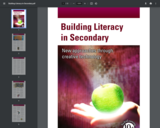
A combination of focused activities and creative, open-ended technology projects can help you take a new approach to building literacy with your secondary students. Use these articles, samples, and lessons to find new ideas and approaches that will work for your learners.
The Building Literacy in Secondary guide includes:
- Articles
- Reading, Literacy, and Digital Creativity
- SPLAT...POW...WOW! Motivating Readers and Writers
- More Than Just a Writing Prompt
- Supporting 6+1 Trait Writing
Lesson Plans
- Create a Video Poem
- Design a Book Cover
- Character Scrapbook
- Not Your Average Portfolio
- MyBook (Fakebook) Page
- Digital Book Trailers
These articles, lessons, and strategies engage students through creative technology to maximize student literacy skills.
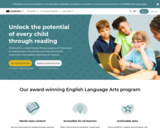
"CommonLit delivers high-quality, free instructional materials to support literacy development for students in grades 3-12. Our resources are:
Flexible;
Research-Based;
Created by teachers, for teachers.
They believe in the transformative power of a great text, and a great question. That’s why we are committed to keeping CommonLit completely free, forever." (CommonLit site)
Teachers can search for content by grade, theme, content type, genres, literary devices, and more. Alternative options are offered for students that may require adaptations for reading an easier level.
Parent guides are also provided.
Benchmark and ongoing assessments are available.
360 Curriculum provides full integrated units E.g., Unit 1 Characters Who Change and Grow which includes a baseline assessment, vocabulary activities, reading lessons, writing lessons, quiz, grammar activities, media exploration, discussion, and a culminating task.

A great resource for getting started with The Daily 5.

The Daily Five is a literacy structure that allows for differentiation in the classroom and provides consistency. • It is an integrated literacy instruction and classroom management system for use in reading and writing workshops. • It is a system of five literacy tasks that teaches students independence.
This site supports the use of Daily 5. The free membership allows you access to the tip of

Doodles Academy is a powerful free art curriculum for grades 1-5 that is available virtually. It provides art projects that offer authentic art experiences for students -- every student makes their own artistic decisions and walks away from the project with an artwork unique to them. Each project includes video tutorials and thorough lesson plans so that anyone can feel comfortable teaching art, regardless of their background or experience level. More, the art projects are aligned to topics and themes found in literacy, math, social studies, and science, so while students work through an art project they are building knowledge and context around other subjects.
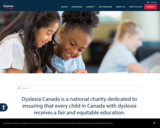
Learn the basics, find resources, get connected, get involved and more!
Resources include: tools, technology, tutors, education plans, financial assistance, online courses, webinars, videos and much more!
Dyslexia Canada is a national charity dedicated to ensuring that every child in Canada with dyslexia receives a fair and equitable education.

"Six videos have been created to highlight strategies that support language development for young children. The Enhancing Young Children’s Language and Literacy Development video series features interactions between Saskatchewan early childhood educators and children, and offers practical suggestions for implementing language and early literacy strategies.
Each video is approximately 15 minutes in length and includes information and examples for the continuum of early years development from 0-5 years of age. The videos will be useful for educators and staff who work with young children.
Video Titles include:
Getting in Tune with Children;
Incorporating Vocabulary into Routines;
Adjust the Way You Talk with Children;
Turn Taking with Children;
Sharing Books with Children; and,
Oral Storytelling with Children."

his short video will give you a brief explanation of how I run my Daily 5 rotations and how my rotations are set up on my Daily 5 Rotations board.